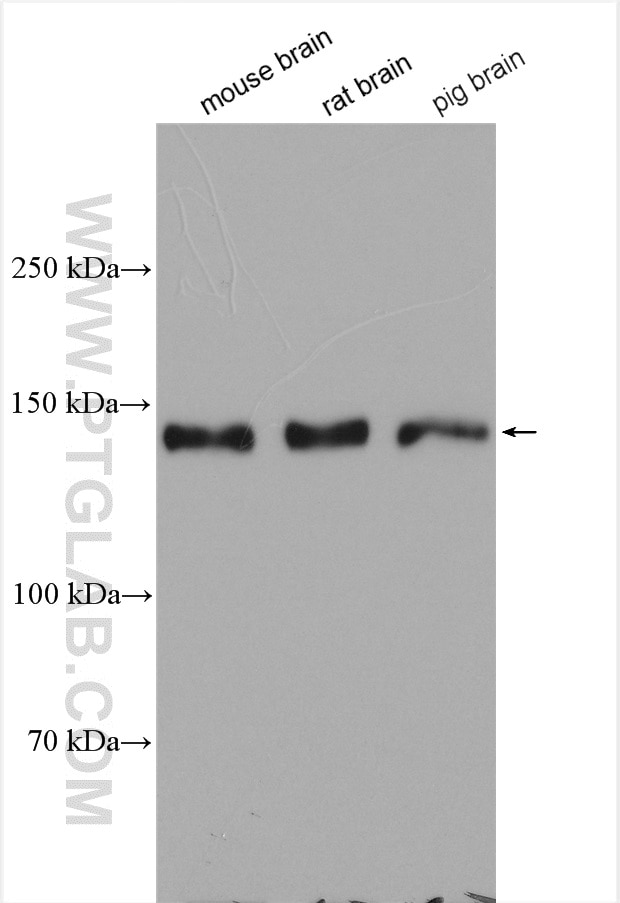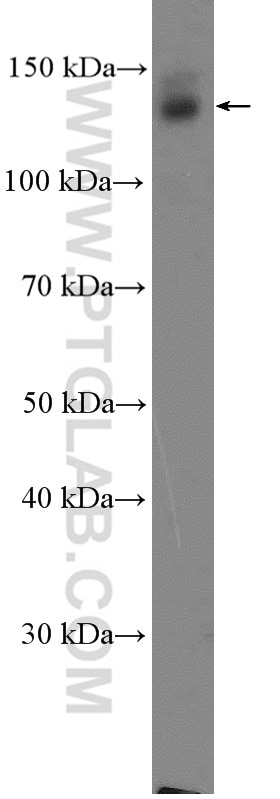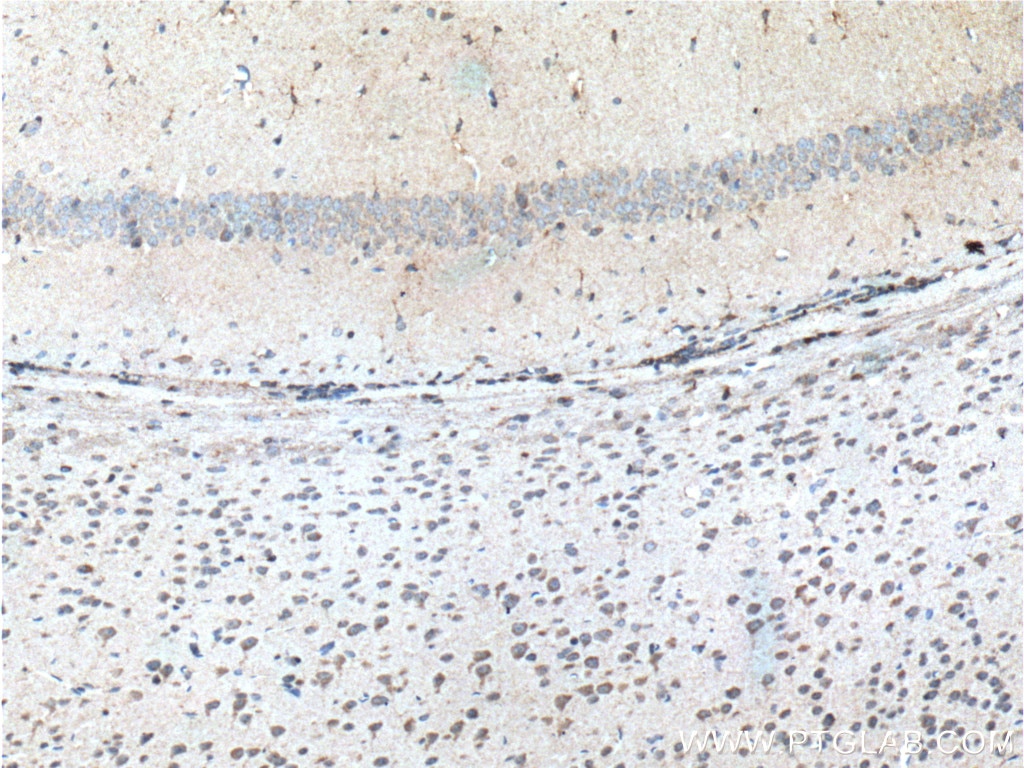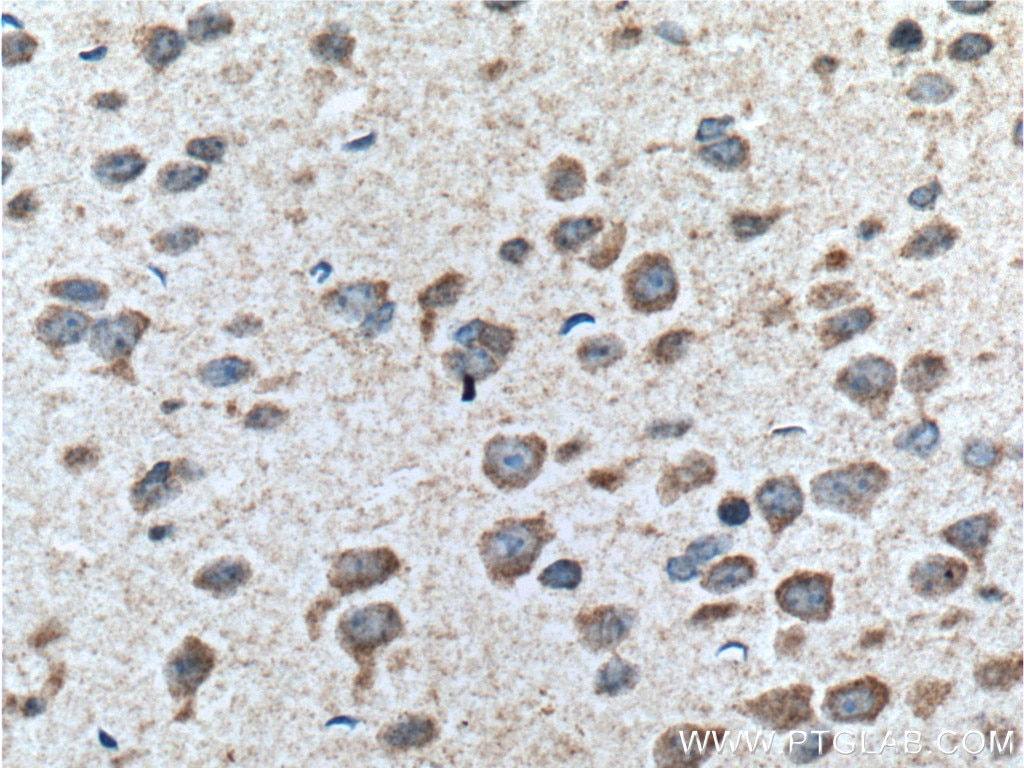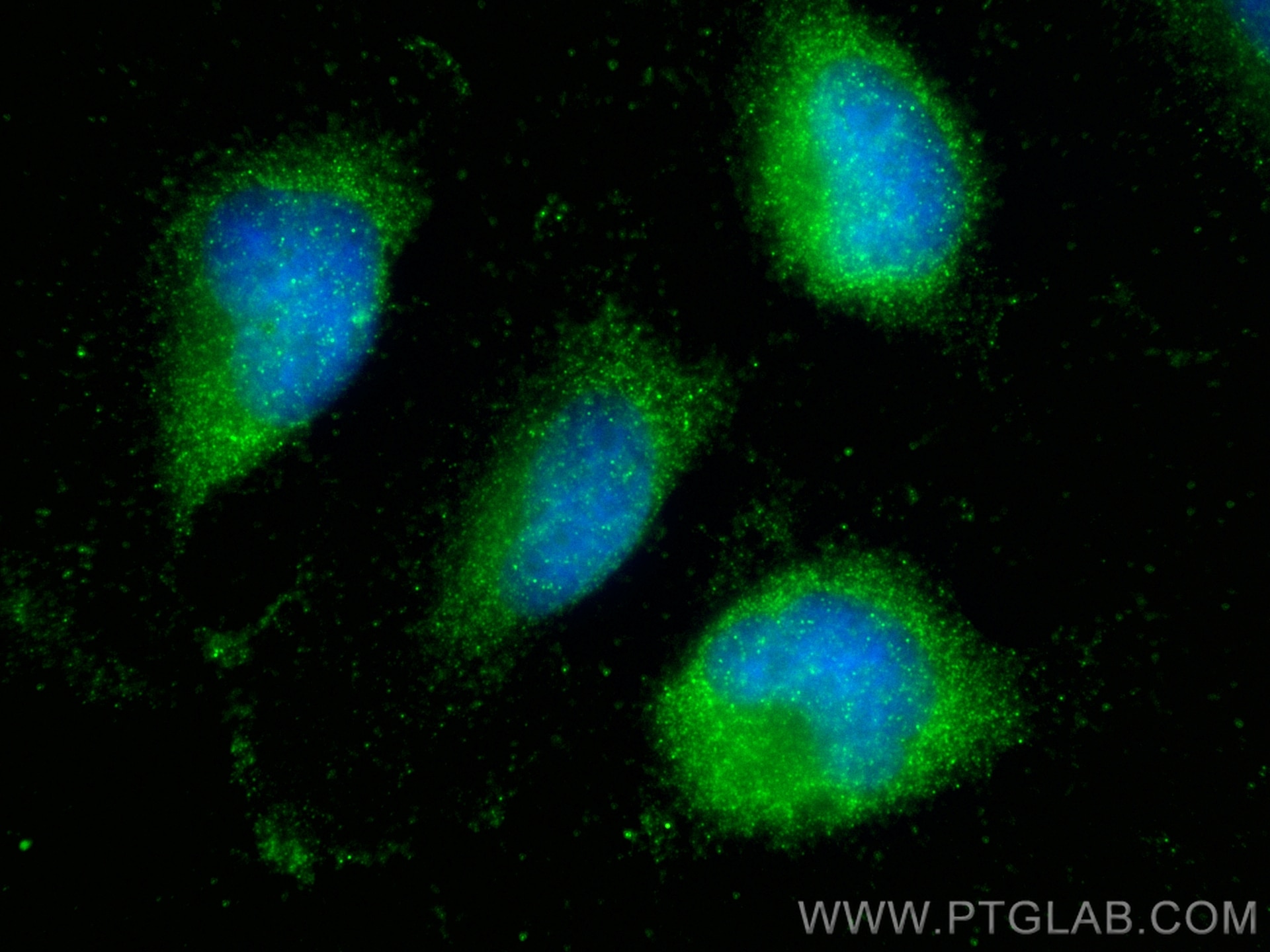SYNGAP1 Polyklonaler Antikörper
SYNGAP1 Polyklonal Antikörper für WB, IHC, IF/ICC, IP, ELISA
Wirt / Isotyp
Kaninchen / IgG
Getestete Reaktivität
Hausschwein, human, Maus, Ratte
Anwendung
WB, IHC, IF/ICC, IP, ELISA
Konjugation
Unkonjugiert
Kat-Nr. : 19739-1-AP
Synonyme
Geprüfte Anwendungen
| Erfolgreiche Detektion in WB | Maushirngewebe, rat brain tissues, pig brain tissues |
| Erfolgreiche IP | Maushirngewebe |
| Erfolgreiche Detektion in IHC | Maushirngewebe Hinweis: Antigendemaskierung mit TE-Puffer pH 9,0 empfohlen. (*) Wahlweise kann die Antigendemaskierung auch mit Citratpuffer pH 6,0 erfolgen. |
| Erfolgreiche Detektion in IF/ICC | U-251-Zellen |
Empfohlene Verdünnung
| Anwendung | Verdünnung |
|---|---|
| Western Blot (WB) | WB : 1:1000-1:4000 |
| Immunpräzipitation (IP) | IP : 0.5-4.0 ug for 1.0-3.0 mg of total protein lysate |
| Immunhistochemie (IHC) | IHC : 1:50-1:500 |
| Immunfluoreszenz (IF)/ICC | IF/ICC : 1:50-1:500 |
| It is recommended that this reagent should be titrated in each testing system to obtain optimal results. | |
| Sample-dependent, check data in validation data gallery | |
Veröffentlichte Anwendungen
| WB | See 7 publications below |
| IHC | See 1 publications below |
Produktinformation
19739-1-AP bindet in WB, IHC, IF/ICC, IP, ELISA SYNGAP1 und zeigt Reaktivität mit Hausschwein, human, Maus, Ratten
| Getestete Reaktivität | Hausschwein, human, Maus, Ratte |
| In Publikationen genannte Reaktivität | human, Maus |
| Wirt / Isotyp | Kaninchen / IgG |
| Klonalität | Polyklonal |
| Typ | Antikörper |
| Immunogen | Peptid |
| Vollständiger Name | synaptic Ras GTPase activating protein 1 homolog (rat) |
| Berechnetes Molekulargewicht | 1343 aa, 148 kDa |
| Beobachtetes Molekulargewicht | 148 kDa |
| GenBank-Zugangsnummer | NM_006772 |
| Gene symbol | SYNGAP1 |
| Gene ID (NCBI) | 8831 |
| Konjugation | Unkonjugiert |
| Form | Liquid |
| Reinigungsmethode | Antigen-Affinitätsreinigung |
| Lagerungspuffer | PBS with 0.02% sodium azide and 50% glycerol |
| Lagerungsbedingungen | Bei -20°C lagern. Nach dem Versand ein Jahr lang stabil Aliquotieren ist bei -20oC Lagerung nicht notwendig. 20ul Größen enthalten 0,1% BSA. |
Hintergrundinformationen
SYNGAP1, also named as KIAA1938, is the major constituent of the PSD essential for postsynaptic signaling. It's an inhibitory regulator of the Ras-cAMP pathway. SYNGAP1 is a member of the NMDAR signaling complex in excitatory synapses, it may play a role in NMDAR-dependent control of AMPAR potentiation, AMPAR membrane trafficking and synaptic plasticity. SYNGAP1 regulates AMPAR-mediated miniature excitatory postsynaptic currents. SYNGAP1 may be involved in certain forms of brain injury, leading to long-term learning and memory deficits Defects in SYNGAP1 are the cause of mental retardation autosomal dominant type 5 (MRD5).
Protokolle
| PRODUKTSPEZIFISCHE PROTOKOLLE | |
|---|---|
| WB protocol for SYNGAP1 antibody 19739-1-AP | Protokoll herunterladen |
| IHC protocol for SYNGAP1 antibody 19739-1-AP | Protokoll herunterladenl |
| IF protocol for SYNGAP1 antibody 19739-1-AP | Protokoll herunterladen |
| IP protocol for SYNGAP1 antibody 19739-1-AP | Protokoll herunterladen |
| STANDARD-PROTOKOLLE | |
|---|---|
| Klicken Sie hier, um unsere Standardprotokolle anzuzeigen |
Publikationen
| Species | Application | Title |
|---|---|---|
Front Aging Neurosci Impaired Learning and Memory Ability Induced by a Bilaterally Hippocampal Injection of Streptozotocin in Mice: Involved With the Adaptive Changes of Synaptic Plasticity. | ||
Neurochem Int Resveratrol ameliorates learning and memory impairments induced by bilateral hippocampal injection of streptozotocin in mice. | ||
Eur J Neurosci SynGAP is expressed in the murine suprachiasmatic nucleus and regulates circadian-gated locomotor activity and light-entrainment capacity. | ||
Neuroscience Further Studies on the Role of BTBD9 in the Cerebellum, Sleep-like Behaviors and the Restless Legs Syndrome | ||
J Nutr Biochem Hippocampal proteomic changes in high-fat diet-induced obese mice associated with memory decline |
